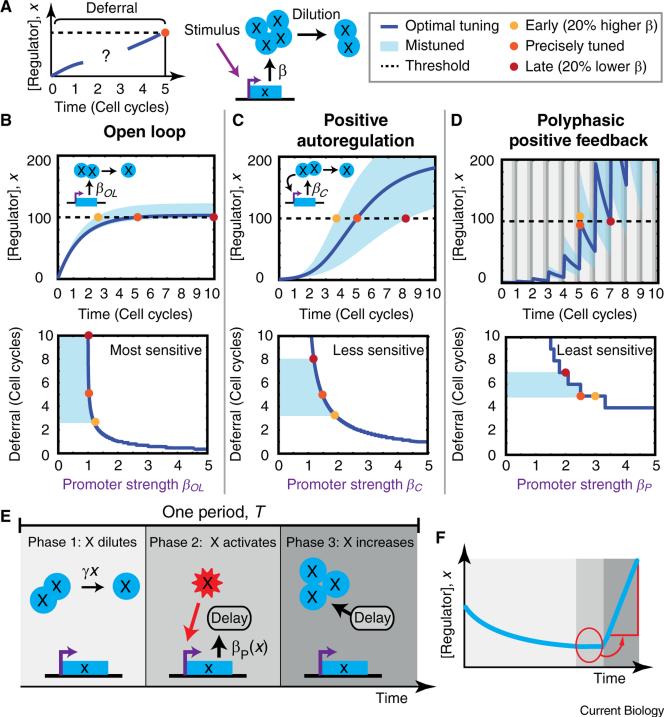Figure 1. Count-up timers.
(A) Cellular timers defer differentiation for multiple cell cycles. In a count-up timer in proliferating cells, a master regulator (blue x) is produced by a circuit and constantly diluted away due to cell growth. The timer circuit enables x to accumulate slowly over multiple cell cycles, despite dilution, until it reaches a critical threshold for differentiation (dashed line). (B–F) Count-up timer circuit architectures show distinct tuning properties. (B) Open loop count-up timers relax to steady state in ~1–2 cell cycles (top). Only a narrow range of promoter strengths, βOL, permit x to cross the threshold after a specific number of cell cycles (bottom). Mistuning βOL by ±20% (blue shaded region) causes the regulator to accumulate either too quickly, resulting in early differentiation (yellow dot) or too slowly, resulting in late differentiation (dark red dot). (C) Continuous positive feedback timers balance dilution with positive feedback to extend deferral times (top). This sensitive balance requirement means only a limited range of βC values support multiple cell cycle deferrals (bottom). (D) Polyphasic positive feedback timers separate feedback regulation into three non-overlapping phases, which cycle repeatedly (top). Polyphasic timers are significantly less sensitive to feedback strength variations and thus easier to tune (bottom). Circuit dynamics (E) and time trace (F) of a single polyphasic period are shown for illustration. In the model, phase 2 is assumed to be very brief compared to the other phases, but is enlarged here for clarity. In tuning curves (B–D, bottom), the promoter strength of each circuit is normalized by the minimal value necessary to cross threshold. (C) and (D) use saturating feedback. See Supplemental Information for simulation details.

